Another traveling day… After I packed I paid my bill and grabbed a rickshaw for the short ride to Gwalior Railway Station. There I took the Bhopal express to my next destination, Jhansi. About an hour later we arrived and it did not take long before someone approached me for a taxi. Three people were competing for the job so I got a fair price and was on my way to Orchha.
Once we left Jhansi the roads became quiet and I enjoyed the agricultural sights leading to Orchha. And then I saw the fort that dominates the skyline of Orchha, we were not far now…
Orchha is a historic small town on the Betwa River showcases a supreme display of Mughal-in- fluenced Rajput architecture in the shape of spectacular palaces, temples and royal chha- tris (cenotaphs).
My resort was built between the river and the cenotaphs, I could not have wished for a better location for my tent (yes I went camping, Indian style…)
I enjoyed a buffet lunch which was not that bad after all and then headed off sightseeing. Being so close to it my first stops were the cenotaphs. People were bathing in the river which has a reputation for being the cleanest in India. Still I was not tempted so I focused at the sights.
The cenotaphs, funerary monuments to Orchha royalty, huge and serene chhatris rise beside the Betwa River at the south end of town. I had already seen them from my resort but walking between them was even more,impressive.
On leaving the site I witnessed a small funeral procession passing by and I could not have thought of a more appropriate place to do so.
The town centre was about a kilometre further on and I strolled at ease on the quiet road leading there. On arrival I heard loud music from a small wedding party that took place next to the temple.
The spectacular soaring spires of the 16th-century Chaturbhuj Temple are visible from all over town. The Chaturbhuj has never been used for its intended purpose of housing the Rama idol that remains in the Ram Raja Temple next door but it was still an impressive site. I enjoyed the dark areas of the temple but decided not to climb to the roof top.
Instead I headed towards the market, it seemed some kind of preparations for a festival were going on as lots of stalls with religious and less religious items were on display. They all had one thing in common, both the goods and the merchants were extremely colourful, a feast for the eye.
A lot of Sadhu’s were present but I tried to ignore their namastes which would undoubtedly be followed with a request for money.
Instead I continued to The massive Jehangir Mahal (Ochhra fort), an assault course of steep staircases and precipitous walkways, represents a zenith of Indo-Islamic architecture. More decorative than the Raj Mahal next door , it was built, or at least completed, in the early 17th century by Bir Singh Deo, possibly for a visit by emperor Jehangir.
Its walls are crowned by eight domed turrets and eight slender domed pavilions, and superbly devised sightlines carry your gaze through successive arches and doorways to jali screens with views over the countryside or town around.
Like on my visit now 10 years ago a group of monkeys were guarding the main stairs leading upstairs but they left as soon as you came to close, only to take their intimidating poses again once you left.
Besides the fort was the 16th-century Raj Mahal, in several rooms deities such as Brahma, Vishnu, Rama, Krishna and Sita, plus Orchha royalty, wrestle, hunt, fight and dance their way across walls and ceilings in vivid, colourful murals. Unfortunately some of them had severely faded.
I returned to my resort, checked the water in the pool, which was a bit to chilly for my liking and enjoyed the warmth of the sun in front of my tent.
That night I did not feel well, during the evening I already suffered from severe heartburn which apparently was a sign for things to come. I woke up with an upset stomach and raced constantly to the toilet. To make things worse I felt extremely dizzy, had cold sweat and was fighting severe cramps in my legs.
It wasn’t a very pleasant night and I was more awake than asleep. Not strange that in the morning when my stomach finally slowed down I fell asleep and did not wake up till 10 o’clock when my phone rang and of the of the waiters in the restaurant asked whether I wanted breakfast. To be honest that was the last thing on my mind. A hot shower did me well as well as the warm ray’s of the sun. I went to the restaurant, had a cup of tea and a bottle of water at room temperature for my O.R.S. And that was it, I could not even face plain toast.
Back at my tent I slept another couple of hours till one thirty, it seems I really needed it. Still could not face anything to eat but I knew I needed to have something in order to recover so I ordered a small portion of plain rice and curd (yoghurt) which I mixed to make it go down easier. Indeed I managed to finish it after which I returned to my tent again, sat in the sun and listened to some music for the rest of the afternoon.
From everywhere hypnotic sound of drums and chanting filled the air, a sign that some kind of festivities were going on in the area. Still I resisted their call and focused on getting well.
And the restful day did me plenty of good indeed, by the end of the afternoon I felt much better indeed. I still was suffering from heartburn a bit so decided to skip dinner as I did not want to upset my tummy again. I booked my taxi for the next day, listened to some music and called another early night. That is India for you.
That night I slept well, and although I was rudely woken up at 6:15 by someone shouting loud announcements through a megaphone I felt refreshed and well. A hot shower and breakfast did the rest…
My taxi arrived at 9:00 sharp as arranged the day before and 40 minutes later we arrived at the railway station in Jhansi. There I boarded the Bhopal express for the three and a half hour drive to Bhopal. A new destination and new adventures, I was ready for it.
On arrival in Bhopal I grabbed a taxi to my hotel. Bhopal did not leave a big impression on first sight, it seems a rather grey and dirty town. Of course arriving in Bhopal cannot leave the terrible chemical disaster untouched.
Shortly after midnight on 3 December 1984, 27 tonnes of deadly methyl isocyanate (MIC) leaked out over Bhopal from the US-owned Union Carbide chemical plant. Blown by the wind, a 40ft wall of toxic cloud coursed through the city. In the ensuing panic, people were trampled trying to escape, while others were so disorientated that they ran into the gas.
Estimates of initial fatalities range from 3800 to 16,000. The total death toll, including those who have died since, stands at around 25,000 according to people working with victims. More than 400,000 people have suffered a catalogue of illnesses ranging from diabetes, cancer and paralysis to premature menopause and skin disorders, while their children have suffered problems such as birth malformations and reduced stature. Separately, dumping of toxic waste since well before the gas leak is thought to have contaminated groundwater around the Union Carbide factory with chemicals that cause cancer, birth defects and organ damage.
By now I could not see many direct results of that ongoing tragedy but the dull, dirty and grey appearance of the city centre must be directly linked to it, people are still suffering and the payout for their losses have been very meagre to remain on the positive site. And the industry is still going on, now in the hands of new owners who reject responsibility for accidents that happened in the past…
Finding my hotel was not that easy and my driver had to ask several times. But in the end he made it and I did like what I saw. The room was well designed and taken care off, there were even plants in the bathroom.
By now it was almost 15:00 and I noticed my energy levels were still not optimal. Therefor I took place in the garden cafe and ordered coffee and a bite to eat. The rest of the afternoon I read some more in my book, had a drink and went to bed early.
Thanks to my comfy bed I slept well that night. Breakfast was rather simple as I limited myself to toast, tea and bananas as my stomach still was not 100%. Then I arranged a taxi for my sightseeing today.
Rising from the plains, 46km northeast of Bhopal, is a rounded hill topped with some of India’s oldest Buddhist structures.In 262 BC, repentant of the horrors he had inflicted on Kalinga (Odisha), the Mauryan emperor Ashoka embraced Buddhism. As a penance he built the Great Stupa at Sanchi, a domed edifice to house religious relics, near the home town (Vidisha) of his wife Devi.
It was a beautiful sight with about 18 stupas and temples in total. The views from the area were amazing and I enjoyed observing a group for pilgrims who were accompanied by some Buddhist monks whilst they received some teachings and chanted together. It was a peaceful place.
Next to the stupas a new temple was built and here a group of devotees was singing, such a wonderful experience.
Once I was happy and had seen enough we continued our journey to the next stop. Cut into a sandstone hill 5km northwest of Sanchi are some 20 Gupta-period cave shrines. Most are Hindhu but there are two Jain shrines as well… Several cave shrines were close to each other’s but others required a long walk through the hills.
And it was warm… Hot I might as well say. I wasn’t coping well so only explored one part of the stretched out hillside. What made it up were the friendly greetings and conversations with the people around. Where are you from?
On the way back to Bhopal we passed a village where something was going on. And Indians do know how to party, with lots of loud music… It was so loud the windows were trembling in their seals…
In my hotel I had another tea in the garden and updated my journal. Then it was time to continue my book, it had been a lovely day…
Another good sleep, refreshing shower and breakfast later it was time to do some sightseeing again. This day I had decided to visit two sites south east of Bhopal.
My first stop was about a 23 kilometre drive. As expected in the city centre the roads were congested and it took a long time to get out. Once we got out of town we could speed up and finally made it to Bhojpur.
Built by Bhopal’s 11th-century founder, Raja Bhoj, Bhojpur originally stood beside a 400-sq-km artificial lake, which was emptied in the 15th century by the dam-busting Mandu ruler Hoshang Shah. Thankfully, the magnificent Bhojeshwar Temple survived the attack.
The temple had an extraordinary appearance, from the parking lot it looked like a massive block on a hill side. I climbed the steps leading towards the temple and saw the first pilgrims busy with prayers and rituals. The massive block was open from one side allowing access to a massive stone dedicated to Shiva where 2 priests were guiding others with their prayers. An unusual place indeed but I was glad I had made the effort.
I spent a while admiring the place and activities after which I continued my journey. In forests on craggy hills 45km south of Bhopal are the World Heritage–listed Bhimbetka rock shelters, containing thousands of paintings of animals, people and other subjects from the Stone Age to medieval times. Fifteen of the best shelters are linked by an “easy” 1.4km round-trip walking trail.
After having obtained my entry ticket I started my walk. It did not take long before I saw the first prehistoric paintings, they were impressive. I had seen similar pieces of work at Uluru, central Australia, but India definitely was the last place where I had expected to see this. It once again proved the diversity of the country.
As said there were fifteen rock shelters where the paintings could be admired and I saw them all, but it was extremely warm that day so I had to stop several times to catch my breath.
Back at the parking lot my driver was waiting for me and we returned to Bhopal, only stopping for a delicious lunch. Approaching Bhopal I could see multiple chemical plants and I could only hope the people over here would be spared from another disaster, it appeared to me they had more than their fair share.
At the hotel I enjoyed a lemon ice tea and a delicious piece of cake. Then I decided for an afternoon nap. Later that evening I had a delicious biryani at the restaurant after which I went to bed.
5:00am next morning the alarm went off and less than an hour later I was on my way to the railway station. There lots of people were sleeping at whatever space available on the floor, an everyday sight at Indian Railway Stations.
My train was delayed by over an hour so I tried to find a seat I the upper class waiting room to avoid the chill in the morning, something easier said than done…
Finally my train arrived and I found my upper berth in the coach assigned to me. I was lucky and had the cabin to myself. The first couple of hours of the six and a half our trip I slept after which I read in my book and listened to some music.
Finally just after 3 o’clock we arrived in Jalgaon Jn where I de boarded the train and walked to my hotel. In spite of it being the cheapest place I would be staying at this trip it looked very appealing and was spotlessly clean. The owner was very friendly and helpful.
In the lobby I met Jens, from Berlin, and we had a nice chat. We opted for a late lunch / early dinner next door and exchanged a lot of experiences from our journeys to India. After a break for a well deserved nap we met again for another beer after which we said goodbye.
Next morning once again my stomach was upset and I did not feel well, by now I was starting to hate this situation as it crossed a line to visit of what would have been one of the highlights of this trip, the Ajanta caves. But in no way I was capable of travelling so I ordered some bananas and after having finished them returned to my room for another sleep and read my book. Not what I had planned for but going out would not have been a good idea.
Later in the afternoon I returned to the restaurant and ordered a spinach soup and some garlic naan to fill my empty stomach. In my hotel I arranged a taxi the following day to Aurangabad with a sightseeing stop at the Ajanta caves, that way I would still be able to see them although I originally had planned to travel by train.
With my stomach at least filled a little bit I slept well that night. Still I did not feel hungry that morning, perhaps as I was afraid to upset my stomach again. I could not resist a black (and very sweet) tea though.
I was already warned that the road would be bad but I had not expected that the major part of the 60 km would be passed unfinished, unpaved roadworks. All would be ready in a years time though so nothing to worry about.
After almost 2 hours we arrived at the Ajanta caves. There I took a bus to the entrance and as it wasn’t even 9 o’clock yet I was allowed to enter the first bus normally only used by workers.
Superbly set in a remote river valley the remarkable cave temples of Ajanta are this region’s second World Heritage Site. These secluded caves date from around the 2nd century BC to the 6th century AD and were among the earliest monastic institutions to be constructed in the country. As the Deccan forest claimed and shielded the caves, with roots and shoots choking the sculptures, Ajanta remained deserted for about a millennium, until 1819 when a British hunting party led by officer John Smith stumbled upon it purely by chance.
As soon as I had bought my entry ticket I saw the caves in a horse shoe shaped valley, just this view was already worth the trip. I made my way to the first caves but as I was so early they had not even opened yet. The workers were shouting to me though, wait sir, wait… And not much later the doors to the hidden treasures within the caves were opened.
One of the primary reasons to visit Ajanta is to admire its renowned ‘frescoes’, actually temperas, which adorn many of the caves’ interiors. With few other examples from ancient times matching their artistic excellence and fine execution, these paintings are of unfathomable heritage value.
Despite their age, the paintings in most caves remain finely preserved and many attribute this to their relative isolation from humanity for centuries. However, it would be a tad optimistic to say that decay hasn’t set in.
It’s believed that the natural pigments for these paintings were mixed with animal glue and vegetable gum to bind them to the dry surface. Many caves have small, crater-like holes in their floors, which acted as palettes during paint jobs.
I was blown away by the details and the fine craftsmanship of those who created these outstanding sculptures and fresco’s. It must have been such an overwhelming experience to see these cues in their active period.
It was getting warm and I noticed I started to suffer and had to take breaks more often, ridiculously often to be true and when at one point I almost fainted I decided to leave the remainder of the caves as they were and return to the entrance. I would have loved to explore some more but was happy and pleased with what I had been able to see.
Back at the car we continued our journey over the unpaved road, only 105 km to go but at this pace it would at least take a couple of hours. I did manage to sleep most of the trip.
In Aurangabad I was dropped at my hotel, had a refreshing shower and went next door to a rather grungy looking bar/restaurant. The food wasn’t brilliant but they did manage not to ruin my cold Kingfisher beer…
Next morning after breakfast I had arranged a taxi for some more sightseeing. My first stop were the Ellora caves.
It is said that give a man a hammer and chisel and he’ll create art for posterity. At the Unesco World Heritage Site Ellora cave temples, located 30km from Aurangabad, this was quickly proven. The epitome of ancient Indian rock-cut architecture, these caves were chipped out laboriously over five centuries by generations of Buddhist, Hindu and Jain monks. Monasteries, chapels, temples – the caves served every purpose and they were stylishly embellished with a profusion of remarkably detailed sculptures.
The location of the caves was not as spectacular as the Ajanta caves and I was disappointed at first. But this was only a deception as it did not take long for my jaw to drop and the shivers run down my spine as an as I got the first sighting of the Kailasa temple….
One of India’s greatest monuments, this astonishing temple, carved from solid rock, was built by King Krishna I in AD 760 to represent Mt Kailasa (Kailash), Shiva’s Hialayan abode. To say that the assignment was daring would be an understatement. Three huge trenches were bored into the sheer cliff face, a process that entailed removing 200,000 tonnes of rock by hammer and chisel, before the temple could begin to take shape and its remarkable sculptural decoration could be added.
The temple houses several intricately carved panels, depicting scenes from the Ramayana, the Mahabharata and the adventures of Krishna. Also worth admiring were the immense monolithic pillars that stand in the courtyard, flanking the entrance on both sides, and the southeastern gallery that has 10 giant and fabulous panels depicting the different avatars (incarnations of a deity) of Lord Vishnu.
Mind blowing, overwhelmed are some of the words that came across my mind wander get through the Kailasa temple, I cannot recall having seen anything like this before.
I sat down for a while to let it all soak in before I continued my exploration towards the Buddhist caves.
Calm and contemplation infuse the 12 Buddhist caves, which stretch to the south of Kailasa. All are Buddhist viharas (monasteries) were used for study and worship, but these multistoreyed structures also included cooking, living and sleeping areas. The one exception, which is a chaitya (assembly hall). While the earliest caves are simple, Some are more ambitious; both comprise three storeys and are on par with the Hindu Caves.
A bit further were some Jain caves to be admired but as the bus had just left I did not feel like waiting an uncertain time for the next one to show up so I left the premises and had lunch at a neighbouring restaurant.
Our next stop was the 12th century hilltop fortress of Daulatabad. Now in ruins, the citadel was orig- inally conceived as an impregnable fort by the Yadava kings. Its most infamous high point came in 1328, when it was named Daulatabad (City of Fortune) by eccentric Delhi sultan Mohammed Tughlaq and made the capital. Due to water shortage that did not take long however.
The fortress was a 650 step climb and I did not feel like that so I remained n the lower part of the ruins, enjoying the impressive sight f the fortress.
There was one more place to visit that day, Bibi-qa-Maqbara. It was built
by Aurangzeb’s son Azam Khan in 1679 as a mausoleum for his mother Rabia-ud- Daurani, Bibi-qa-Maqbara is widely known as the poor man’s Taj. With its four minarets flanking a central onion-domed mausole- um, the white structure certainly does bear a striking resemblance to Agra’s Taj Mahal.
Approaching the site definitely made me wonder whether I was at the right place, it all appeared a perfect copy of the Taj, but all in a much smaller scale. The carvings were beautiful but I did not discover the brilliant inlays of precious stones in marble like o had seen at the Taj. Still a place worth visiting though.
It had been a beautiful day and really pleased I returned to my hotel where I relaxed for a while and updated my journal.
Continue the Journey in Mumbai


























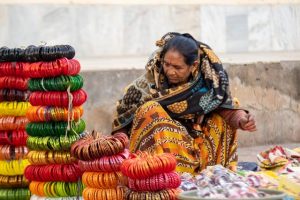








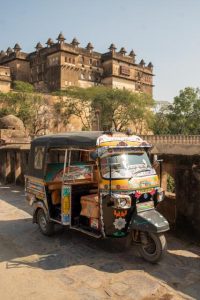




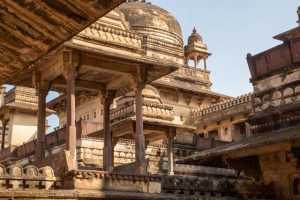
















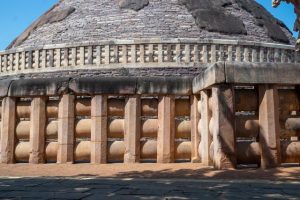











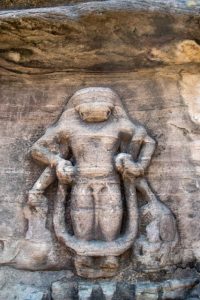
























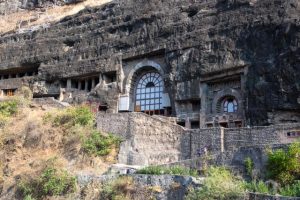











































































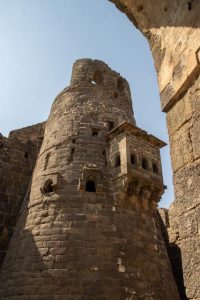






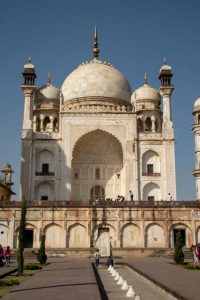






![Ðï¶i%´ vÖÉ2]¨Å5ô[A?¢XQ¤ASÔr¡÷c"Ëc§"ýråcN<G6xå;ÍO<yfÐc)ðKWéØd
÷ $ºãó4};+r×îOç?3Üa+e?Êïoé¼ñAÌ|ÁzöfÔ1Q_Ó&bi/¸Ð8/»êw?~µ3¥"!øUú¡ö'¨Àq¸^>ôËTÓ^è {V;}¯£z{}¼qH}Sê7 #ï@7?Ó 1ÝâúºÑÂïMöÂmæ#§N6)UÜ+.¢ò @Îǧ/ÌiͦvÏaÐö^Ù]Û"=_V¸
7û+Çc"7ÏI ÿÿÑïݤµi]ö/îÈðÙ8R+.4ïþ±xxCå|ÿápÉbê0j³Utøx|®WlÅ(Áh+!.þþ?,DTÉ]d¡¢!FZV±ÖRl7{Rv§r£åå³5F¸¥HØ2GÜ0 òÉ ×¹Ê´EDÀæ×N#À¦ÿ«!}Ì«½ ÕüÄcÛéq·¬ßdøÛ$1ÍxØ{è÷×ÓéZiOsÛØÙ!hÈ|¹l 3&þøxÆM"Ñ(xûoWêÖË°Zl6´UUP¥q´R
ÌHÝw÷Àd¨n¸Â¥Â(rbLS(¿Ï,aJí<<1âE ¦6øä¸J!j{ÃçiB2VÄ
«^ÉÉméL±¤fªÞi©Â¾µ·SêdäeSAdÒéúEìäã7í¡ÿY{ÿ¬2ãîmÚ^ENg̤ÿ¾Ív?#û_OÅÇF$w¦|ÞÑéñEk_Ù «Mæn-Ùõ.XxÂÿÞÇõ]x¼T±S+µN÷9*ch[=.TVSÎéëZ}öÂX¿ÿÒïz^óºÝÜ"Rhj϶[ɤÊáâZ0¤IöGȾöÍnc6Òÿx»Á'sNßF$$5¸VW uØoóWãñÇ!Ù§Âۡ榩'ʤm¶5©g¹R 0]À=÷È6êÍÁõ%f4Ü×y¯Åä÷ú¿¿nÄ+ÓéñË@`Mª#xªiÓ&Åb=$î úñQMN:O-¼Ó¦ËéÒæ?Þ ?n¦´=rC%±0Mm¯ã¥X®LNØÒ(H)ĵµÙOL8P·¶0(TâÚq4R@vu4ÈY¦y²Ú鶤r½j|øï0îH#®mä mÏ©ÇâU$ûÑ×zxvÙ^ýztd2ñgf2IR(IðvYÞÖBûH-aËv÷úr`µR8ÁU0XÿÿÓï¿_"Eµ~H+ô«7½5Öɬ2)¾XÅNxC(Nýî¬1TU·vS2.bûj?hxU&È¡#³wîªýØÈÌ;ÍBÏO·-4ø#ô`vÅ÷/.몢;s;±þ8À&D¡mònçvc¹'Äbçj¸XþÈAz¯S¹ï
P×âÜHQZÇl,ÀBü¸Úèi+WÔ¹c!cÜt_ø°ÚHf±Ýmï 5¿ëÇ&$¬©¸8
MdVb À$¦-¼T]ÇNÑHí#Ì_ºaëZ×xÏU÷yìXÕn+-F#,-V¦ä}±þ°ý¡£s AK¥úÅh¼è=0y ÀjM©ª©ÄHÔ¤g®þ¿Ñ²Ã?ÿÔôÛ¤ãÓQ¶+í´7k,ò¥&¤üüÞÇß"6dwF<ÀFÄôê2l«Ï2øؽ?Dòd9±ß1ëï§Ìm ^w%Aö@zWüÿàr±Þ;b¢)ï.÷eµzí8«Ðå-@ZÎòmJÃdàJy¨tðÅ %ó(·aÜ®RlRÙõ #Dä¡Z¢«ZõÛ)6Æ! 6 ¬*M)ãµ)3nMÄÆâ±£;»W K0í|ZI)ûáË"dÈANGÃ:ÉÞ2b$ïPAÞ§#ÄÊåÕÞ÷÷¾£ÿ$u'ñÉnÇdEåͤinoehE8Âë¿Oæ§Ë%u·£*IÊÜ¢ÂûñEG6)©ëRy~Þ&I$Õp®è´rÕM;dã&7I÷<ÁuIGíZW YÒàÜHÔ®FP¦@ÛÏ5]½Õn/¸.$-Ê@M@<úuÛ/À× KÒ´·[K¢:0q±G¦¢~é_(!Zk±`IûDß~§,®RàTï·a4¬+©×qZDÆà¤Ôèzå°!JO´X§%lHYÔÖ`~×H$2vÖðzWÒìIþc±÷ÈKPÊ3ïY{j*´D&¤õ*iÈQ»°FgÊÿÕô«Ê
6a¸ËÃ¥pE(ãé÷ÀE²YxHå"£Sf§¸ïÑTàxáKMÌÇÁw?yÃ#fBØÅï/e¼f{Ãè%UJEýl²¦ Ei¶DVÐ!zZCÜN% d·ñjyIÚ1×æ|RfØ ßjæ"!®B@çT_£)¨Ûp câæ_O9iR:ªsÓ+°E^Z¦òæ&á²|§.ü24ɤyÎãQÞVà¯3»ìF«_ó.¯m5éÇ¢
|$Tb¥åMNââþád0W¯CC×ýlHV-¨OéÝΪÈãåF9``Jyæ{Ú}W©?8"¥OËWF+RZôSæ8É!y£Q{Ç5R#T±9v×3»%üµZézå¯ÀM~ÒxdsnY@ìC}åÉèÕkI)ßuë®+ å¨[L¤Ãàq]¿¿| 9hgT_?÷dwöùdÀÅtwüìl³(LÆ߯*)&¤c¡n¸ñ$Tw" vöÉ0!TKÉÉè;eLkiª("z²!-Öµ)õ³?CÿÖô,sØ0ÙíÛK§ÔöÅ3(2vUç®VKh oÖ5µMàòz"ÿ1"Ø¢n>xRÒ¢Û¹~B)&!l©/»»_°Ð¹Ü{{¶U9÷6ÂFòþsxÐZX×Ô'¨©bzW&ákOCr²@C4g÷/²PÔW ÿÈÌ%~iÕn,R8>nI- ë·Uñȵ×éo-½±ÞXÔ ñ¨ÝüGþ°{ãm}ƪbùV bùÝ^]BUÜDj>_]7w½ÈTwf(¢¤ïRv ðÉ(COòÞ=LDxÆì¦@ uöȲ8Ôl´Ë«K;ÛbVg¨@¥
¥2FLDHKN¹GøãhéÕXPÓärBLS èÿ.È*%¶®ÞØnÊÕÍZææqþìp¿Ewü2E9½×O»µ¡ÕvxÏOO¥ÓÿÈU¶rN'S{¨McimµHfÙäæ$Æ[i½97ðaÑË`Bcmz¡EkN9"XÒ1eåBR:`)FG'$5ØøäB¼q6ãµr`°!¼H<NÇ-Ys°¥Û,¬_"ѨÔMkÿ<ò¸}vÊ_Kÿ×ïPÉê?§(ôî¡ÿ4äÁj¦ÞGžÃ~øÈñ
ØÒ4§Ø}£<éØ[Íoµ3©jShÇ@ÿ ;}ýrh_SnÚ<;ï%QÛ,@@*IðÈÈT½{{ßóJæyF8¶dP¨éJWsî~ÎBÙRæDÆ[&«ARÊMkSü´Ál¥
£AãªíJ©ðÐSÃìA°p83O"zL(@«Ì*4()ZwʯvÒ¬2.Àâ+uÝ+ÂXÝÙþdÕöëö¾Î )4
D¼LWÖÜý_²O¸Âµ § Ê~ÖÄôGªc¾Ô¶8ê%®FÍS¼c¨tãáÇìáâorÈ^&H
¼Pßo½øvv]ú¡ÚââXQ|Q«0Piº
Yä°15:Ô|CAK¤·1±¼
Tà7µka:é"h¨_a!ØõË8§
Þ^Ù''g?°0¶aåKÉ/m%µ¹··£ ì寿ldkªo.I·j{oÿ)!'G¸°£©¡Sk)7-öÇAN_«£#~×l!æ´§L,HG#u©`>ók/8ÍÔpGÉ[%l%ô¿ÿÑïò¹w*hLîÖ!;"ì£áñ±ú w&=ï=ó>¡õíYÕ¸÷ió¦*;ÒþQÐmg#¸ZÒ½ò²h6> ØÈì]¤1êT%³aì>FæöHÚq½}'o°[°cÛóe¸"ôKËstn#dDTõr¯â2¹È
mjÆø'´õk4g÷MZÑïüp²»Í/Ö³<.K¡a´rNåWÓGÖÐô 3¯R§ü¯ø,$L
»ºX½;dø"t,}ò²[¥UQy¥¡Àü°¦H¨æ¼Èø@4äO
q(v
;©TAYW§«¿§û,5ºl(±ÕÐ#«VâF=AcM¨?ÖÉmÒcX¬m
oÚa^ª×¦S(&ÃB ËvêÓ,6ðÉ3° N&kÐV£~¹¥Á¹ÙÊ8t)ªJï;[Éû§xº¿ÛP(ëóørèÎ2"-KhÃ,AÖXøFVZÕ¾Õ8äIkWÖ¤X-a#y%ä#fq²b¼ý¿Yáím~&èæYãàê¼RkU]ö?o)¸EIá`}u õzïAjúÆKkÃ|Jç÷'ÄVùa eïÛ|ØÒ¿@Ê2ìaêÓ¼)ÀíH¶#p»£**@vLãËÒúþ^´bÏ#òhÍ*hA^ùTpg]½º²ÖeAÎ[v)]¨}°!uK]3X_3zt NW«/
zàºHª³»V;xÀXc&ØÓo+%EÆ$æû«¥;ÓîÅ6®öÄD²ï_Ò½>upÚ³¬l«~ñ½(H$7M<×nm/ÓxçêFÔY8ýõû5Ë.ÚȤ§XÕþ®S$) =Á¥~YLç+ åbÂl¨y_GúÜߥîz[ý]ø#÷ßû4Ë`8E8ÙOlrJ7Î:¬Z`[Wf»y´bøÔR´éð¶2d(´NDR3LÓî_Ôº¢^Ü×d$¯~T¨¦çâÿ
ÊñãͲ|Ôµ+#lqAèÔ7Á^Aørq<©°òÝéõãjx~8ì#¨."_æf«Täòm³^!Åêù&m@úã-n( û]Û*ÛÈÙEÝ寧GN#ÓF$ [ì÷XS¶ú¸tã´¤S¸Ú:dĤzΡ-å㨪§¯]Éç,k(¿,XÏ}|¥IH¡ø¤mÓ°8¶W¬êoat¢ ¦äûÿIJ nÉ
DîQe¡âûìÞ$dØ"á¾l7;dbyy]nÁûWÿ³0ÂÉõ´¶1É%[yhÏ-Çõ5åäÿÿÓî]ªü*¿åè2r=â:±/5_¯ÑRÜ|dt.závR7z0¸z£)mHï¦_¤dÿr¦B;U¾ÿ³Gw"<ö½0O²%bRñF¯A,ö¶²Òâ$¼É#ár?ñ,¦Eº,nâöÛR¬®I·0ËàÏ®H)eAm<S¯Æ©î®ÇÀä8¦v¶²34À$*xøNÞø ÙkrU¢YËr¡E©éË*W¸½NÓ縹*@a̵jծݸá²C¦ëSjWà(RJ«W'j?C¾]Â#ͤHLêÃK²Yyù"[7ÙÀRì²È9ñiZØͪê?¼ø!oRqP=G5(øã<ÏVÌÄÃüý+½ÖÎÔO-©ú²·qʵÝhHÙ~Òåg$BAå»æ]bêïRÛ!þUËby049öÖ°Z Q>45P¢
êw?GÃ%º ´¿¨` °ÐÄ¿k#i¢¸*#96l¼S}Éý£¶+ÈÙK¥r9bAjX?o~ä&¡§½ñâÝBË%¨¡î(OÙÿ?³Z¥î9¡Óm!ÓíúDÔÿë8P¯¬=[È÷cu"qé_jâSTÃoµInoò# UEXÔt!
ªG%jGÓ*&)PÊ<ÞhÒÓïÕ¶ÿ$þdZçÉëó)h-¨ .~!Ò´ß/Ãõ4æäÿÿÔ쾬jDrô'àÀöþ£Zã$_Ðܼµ©.çÅþ6]é#¹Ë6ÇÃ0J9÷=|ÇoHÄà½ÍÁÜI!T?äGðÇRKkÖnyÈÛ×Ã"YºÊ}-Ì|£àIA£F͵E:ý8CÐed)%AU±P¯ãB:öÊ$yuô1aÔtñ$&sKw`aÍ}Ay6Ää$7eY°ZÆÓ¥|¾Ù{£¢6ðÚÌìqmÈnÀmVå90oR´»¸A;á*UáäÁ&N?»øÕj92ýÉÇÍ£4Ç$fª;YÁ°ÈÑI¤(µCN(=y¯òüx'¯Dc@ùWS´i%±*$åÈ'ªÀ¤;}ý®9Lñ6r1dNýP¶WQBL[6üA¡åÚ~¼¢2©ÇPÔõOîä"¦=÷øxà$ù#À«<¿Ò½JÒl,íìíáÐƯ2©âîáÚßö¨~ȧ$É6Tõ¨"xHL*d¥VµÐn9dsz¼ëËmÜí-ó1¤22t^1ò.¶çâãñe%Ðtc'êÌca¨K !Bl+Eiom n$ü¦mÐ@µ!´D?°?:oøåmCRoRÝ:#u¬ÙCÐ5Â>Ñü_ñ®AY÷¨Oº¿g(èx×f" íd:¶L[U°·¿5 >å¢át÷ÿ'$C>!ÁªÓpx²@qÈ]jÁé@ ¨|jäC"ùÌOa¬êzƬëUFG2W´Ïû)ÉáËFî4xdvM
äHÎÖAn¤×ÕEP3 `â¡c5âËÿ#9dO^¬ÌÇN?4ĺfN-8{YÉ*¿xü_ì®Y/{VAq÷1¿%éþd¿ºK.a%_î[þËþË'¨ß6Y·ÒõGÓt«¸EyT¥e¥;¡ª×ûY¯¶v2Ùú^à/îY UÕjáÚeãR75åLó-ô·wº|3æ¿âd1äç+ÿöW_
¸ò²xQÚ9KXÜrcCÁ7?(¬M:å6äpì#°Ðuh5¯.í$H déP]Åm]÷ÊäYêò<«Àú³)íRâ9Í`Âþ[yÉCð÷Nßíä¦Éw5ÕÊãlÕÜÓcQÓýVy³Ñ<c©'â$«-AñÃiáP»Òc¿¾ñxè#¶YP·É[ú¸x©cc¯67ªyZ5ÊÂòIG£so"OND|]üÕÃ5{ϱ±JÅÚÚÞÃgªÅÚE!3LäIh6W ³ëüÙEG7ÌHäÉ|ÕcsªÛÚiÚ,KFhÊÖ®ÿÉJ*ÿ&S'ñtmÍ*Nôøô.+m+Ns](http://www.mdoubleu.de/wp-content/uploads/2020/01/Aurangabad-10-300x200.jpg)


